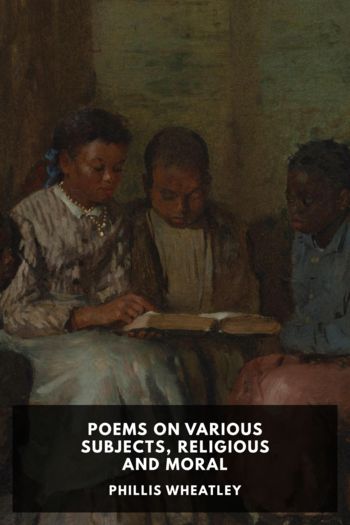Malaria and Rome: A History of Malaria in Ancient Italy, Robert Sallares [reading a book TXT] 📗

- Author: Robert Sallares
Book online «Malaria and Rome: A History of Malaria in Ancient Italy, Robert Sallares [reading a book TXT] 📗». Author Robert Sallares
That, in turn, created a vacuum, a massive labour shortage, on fertile agricultural land where free men were reluctant to work because of the disease. That labour shortage could only be filled by importing large numbers of chattel slaves. Even though the later slave revolts in Italy led by Spartacus and in Sicily have attracted much more attention from modern historians, it is very striking that the first attested slave revolt in Roman Italy occurred precisely in the Pontine Marshes, in 198 . Livy records that slaves, acquired Roman Campagna
253
as part of the proceeds of the Second Punic War, in the territories of Setia, Norba, and Circeii conspired with the slaves of Carthaginian hostages who were being held at Setia to attack these towns.
Military action was required to suppress the revolt. Viewed in the light of the analysis given here, the location of this first slave revolt was not an accident. After the Second Punic War and such later acts of Roman aggrandisement as the destruction of Epirus in 167
, slaves were extremely cheap. Their owners need not worry if the gangs of slaves employed on the land, such as those seen by Tiberius Gracchus, suffered extremely high mortality rates from malaria; slaves were very cheap and easy to replace. For as long as the slave trade to the western hemisphere continued, slave owners there took exactly the same attitude, tolerating very high mortality rates among their slave labour forces and assuming that imported slaves would not live more than a few years on average. Yet they were able to make large profits under those circumstances. The slaves who ended up in Setia were brought there because of the manpower shortage noted earlier. The slave revolt there in 198
shows that the slave economy witnessed by Tiberius Gracchus was already taking root in western central Italy two generations before his excursion through south Etruria which had such catastrophic consequences for the Roman Republic. The demand for labour preceded and called forth supply in Roman Italy, exactly as it did in the United States, according to the arguments of Benjamin Franklin. What happened in Setia was a microcosm of what happened throughout western central Italy and in large parts of southern Italy as well. The slaves who were brought to Latium and Etruria were forced to constitute the labour forces of the Roman villas which came to populate the landscape, villas such as Settefinestre, according to the villa-based slave mode of production characteristic of these regions during the Roman Empire, as described by Carandini.⁴⁸
To replace the concept of the latifundium, which he maintains lacks clarity, Carandini postulated a typology of two types of Roman villas. He distinguished the villa centrale from the villa periferica. He suggested that the villa centrale was characteristic of the suburbana regio Italiae. It was relatively small and practised intensive ⁴⁸ Franklin (1751); Livy 32.26 for the events of 198 ; also 33.36.1–3 for another slave revolt in Etruria a couple of years later; Carandini (1985).
254
Roman Campagna
agriculture using mainly slave labour. All this is acceptable. The point at issue here is the assertion that the villa centrale was found on fertile lands and in a healthy environment.⁴⁹ In contrast the villa periferica was found mainly in more outlying, isolated regions, located on less fertile land and in less healthy conditions.⁵⁰ Extensive agriculture which required a smaller labour input was the norm. That labour was supplied principally by serfs or tenants rather than slaves. This typology implies that unhealthy conditions were to be found mainly on the fringes of the agricultural landscape of central Italy in Roman times. However, there is plenty of evidence, as this book demonstrates, for malaria right at the heart of the Roman world, even in the city of Rome itself. There were villas in the extremely fertile territory of Setia, which undoubtedly employed the slaves attested during the slave revolt of 198 and later supplied wine for the personal consumption of the Roman emperors. Not a fringe area. Yet the land of Setia was pestilential.
This example alone wrecks Carandini’s typology in so far as it concerns healthy/unhealthy conditions. Moreover, as we have already seen, in general it was fertile lowlands in particular that were likely to be unhealthy, while less fertile mountainous regions were usually healthy. The argument proposed here instead is that it was precisely because much of the best agricultural land of central Italy was unhealthy, owing to malaria, that the Roman élite was forced to import large numbers of slaves in order to get the land worked.
Mass chattel slavery was an adaptation to malaria.
One of the plays of Plautus explicitly mentions the idea of slaves dying rapidly in summer after being forced to perform agricultural labour on pestilential estates. The six months’ life expectancy on farms where malaria was endemic recalls the six months’ life expectancy mentioned in the traditional Italian proverb about the Maremma quoted in Chapter 7 above. Of course Plautus’ comments on a particularly undesirable farm, where everything that could go wrong did go wrong, were intended to be funny, but it was a type of comedy which could only be enjoyed by slave owners.
Nevertheless it shows that the type of analysis advocated here was well within the consciousness of ancient Romans:
moreover none of the Syrian [sc. slaves]- the most enduring of men—who ⁴⁹ Carandini (1995: 33): Si trova su terreni fertili e in ambiente salubre.
⁵⁰ Carandini (1995: 34): È posta su terreni meno fertili e in condizioni meno salubri.
Roman Campagna
255
lived





Comments (0)